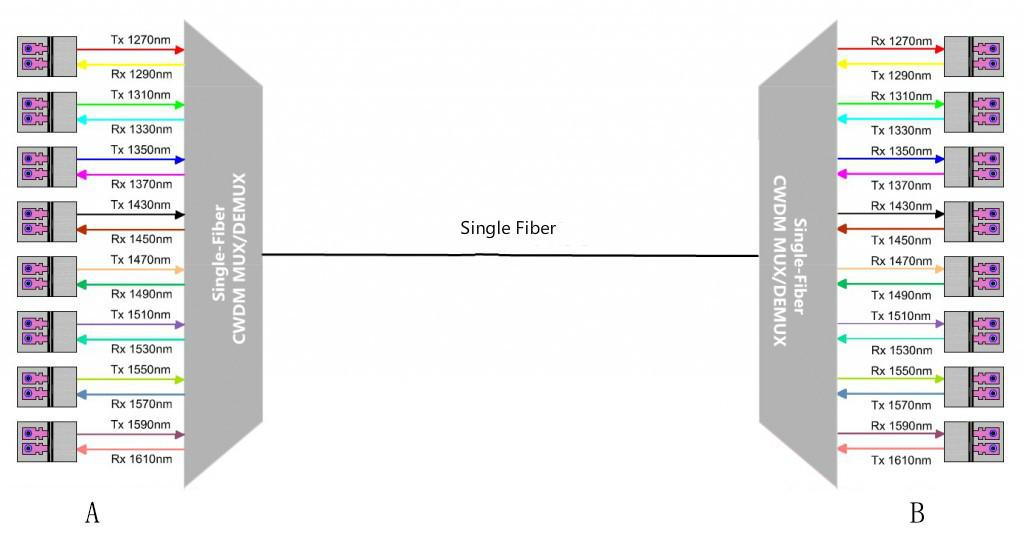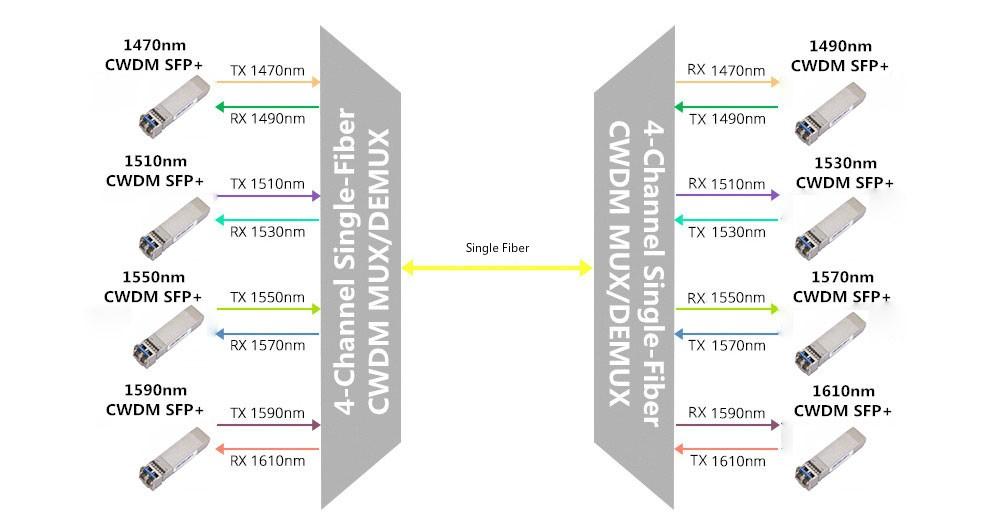- Related articles
- Optical Transceivers for Cisco WS-C3750E-24TD-SD Switch
- The development background of PCI Express
- Optical Transceivers for Cisco N3K-C3064TQ-10GT-RF Switch
- All Cisco GLC-BX-D's information (List price, Specs, Datasheet PDF, Compatibility matrix)
- The difference between GBIC and CSFP
- Optical Transceivers for Cisco WS-C3560CX-12PD-S Switch
- How to check the speed of network card?
- Optical Transceivers for Cisco WS-C2960X-48FPS-L Switch
- All Cisco GLC-SX-MMD's information (List price,Specs, Datasheet PDF, Compatibility matrix)
- Optical Transceivers for Cisco WS-C3560G-24PS-S Switch

In the Coarse Wavelength Division Multiplexing (CWDM) system, there are two main types of CWDM multiplexer / memultiplexer: dual fiber bidirectional CWDM multiplexer / memultiplexer and single fiber bidirectional CWDM multiplexer / memultiplexer, of which dual fiber bidirectional CWDM multiplexer / memultiplexer adopts two fibers to transmit and receive the optical signal, and the wavelengths of the optical signals transmitted on the two fibers are the same; single fiber bidirectional CWDM multiplexer / memultiplexer only uses a fiber to transmit and receive the optical signal, so that the transmitted optical signal and the received optical signal on the fiber must be transmitted at different wavelengths. Single fiber bidirectional CWDM multiplexer / memultiplexer is usually used in fiber expansion applications with only one fiber.

About single fiber bidirectional CWDM multiplexer / memultiplexer
Single fiber bidirectional CWDM multiplexer / memultiplexer typically has only one line port (as shown above), however, there are some other single fiber bidirectional CWDM multiplexers / memultiplexers still adopt duplex line ports, but has only port is working, as the FMU single-fiber CWDM multiplexer / demultiplexer is shown below, although it has configures duplex line ports, actually it has only one port works, another port is marked the "N / A" that means "not available":


How to choose optical module for single fiber bidirectional CWDM multiplexer / memultiplexer
The use example of single fiber bidirectional CWDM multiplexer / memultiplexer.
|
FMU single fiber bidirectional CWDM multiplexer / memultiplexer |
|
|
||||||
|
TX (Transmitting Wavelength) |
1470nm |
1510nm |
1550nm |
1590nm |
1490nm |
1530nm |
1570m |
1610nm |
|
RX (Receiving Wavelength) |
1490nm |
1530nm |
1570nm |
1610nm |
1470nm |
1510nm |
1550nm |
1590nm |






















































